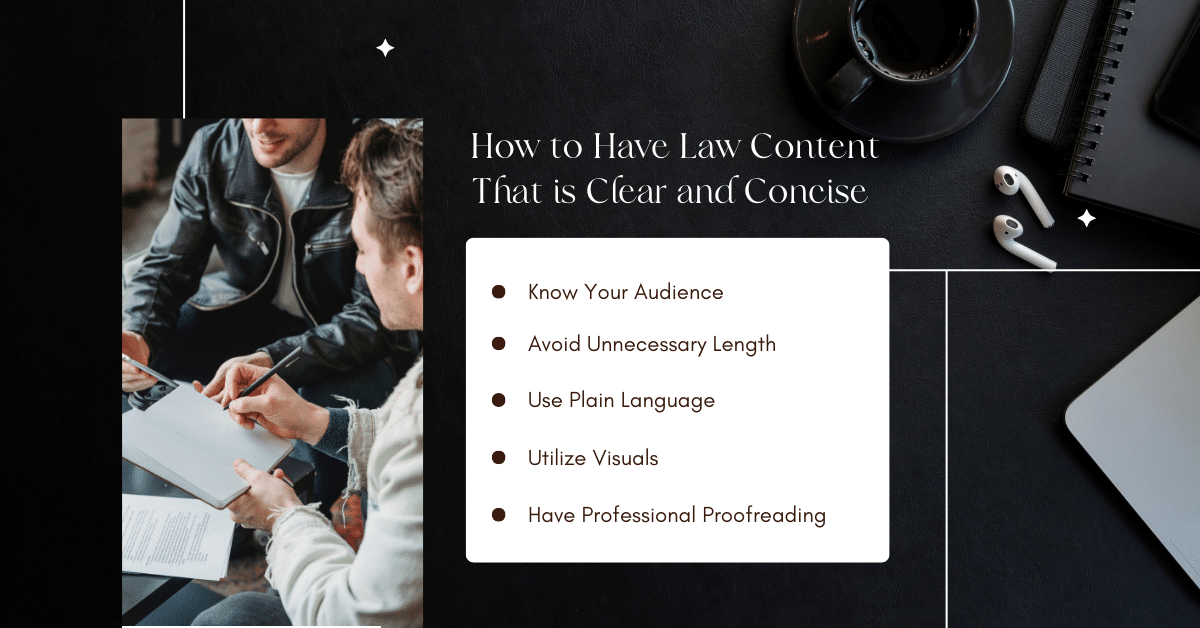Clear and concise information on your law website design in Santa Monica is crucial for attracting and retaining clients, as well as ensuring they understand the legal services you offer. Here are some key strategies to achieve clarity and conciseness on your law website:
1. Know Your Audience
The first step to providing clear and concise information is understanding your target audience. Tailor your law content to address the needs and concerns of potential clients. Are you serving individuals, small businesses, or more giant corporations? Knowing your audience helps you determine the information that matters most to them.
2. Organize Information Logically
Structure your law content in a logical and organized manner. Utilize headings, subheadings, and bullet points to break complex topics into easily digestible sections. Ensure that visitors can quickly seek the information they’re looking for without wading through dense paragraphs.
3. Eliminate Legal Jargon
While legal terminology is essential in your practice, it can be overwhelming for clients. Avoid excessive jargon, and when necessary, provide clear explanations for legal terms. This makes your content more accessible to a broader audience.
4. Avoid Unnecessary Length
Brevity is critical to maintaining clarity and conciseness. Avoid unnecessary verbosity or overloading pages with excessive information. Stick to the most critical points and provide links to more detailed resources when needed.
5. Use Plain Language
Write in plain, straightforward language that anyone can understand. Avoid convoluted sentences and complex syntax. This not only improves comprehension but also makes your website more user-friendly.
6. Focus on the Most Important Information
Identify the most essential information your clients need to know. Highlight your legal services, your team’s expertise, contact information, and any unique selling points on the homepage. Additional details can be provided in dedicated sections or through links.
7. Provide Actionable Content
Your website should guide visitors on what to do next. Include clear calls to action (CTAs) that prompt visitors to contact you, request a consultation, or download resources. Make it swifter for potential clients to take the next step in engaging your services.
8. Incorporate Testimonials and Case Studies
Real-life examples of successful cases or client testimonials can be a powerful way to convey your expertise. Use these sparingly to demonstrate your track record and build trust without overwhelming visitors with lengthy narratives.
9. Regularly Update Content
Ensure that your website remains up-to-date by regularly reviewing and updating content. Laws and regulations change, and your services may evolve. Keeping information current demonstrates professionalism and reliability.
10. Utilize Visuals
Visual elements such as infographics, charts, and images can convey complex information concisely and engagingly. Use visuals to complement your written content and make it more accessible.
11. Mobile Optimization
Given the increasing use of smartphones for web browsing, it’s essential to optimize your website for mobile devices. Ensure your content is responsive and easily accessible on various screen sizes, which can impact how information is presented and perceived.
12. User Testing
Before finalizing your website, consider conducting user testing with individuals who represent your target audience. Their feedback can help identify areas where your content may be unclear or overly complex.
13. Professional Proofreading
Errors in grammar, spelling, or punctuation can hinder clarity. Invest in professional proofreading to ensure your content is free from language-related issues.
Conclusion
In summary, clear and concise information on your law website is essential for attracting and retaining clients. Tailor your content to your audience, simplify language, and focus on the most critical information. Use effective organization, visual aids, and user testing to refine your content. By providing a user-friendly experience, you can effectively convey your expertise and services while ensuring that potential clients easily understand what you offer.




